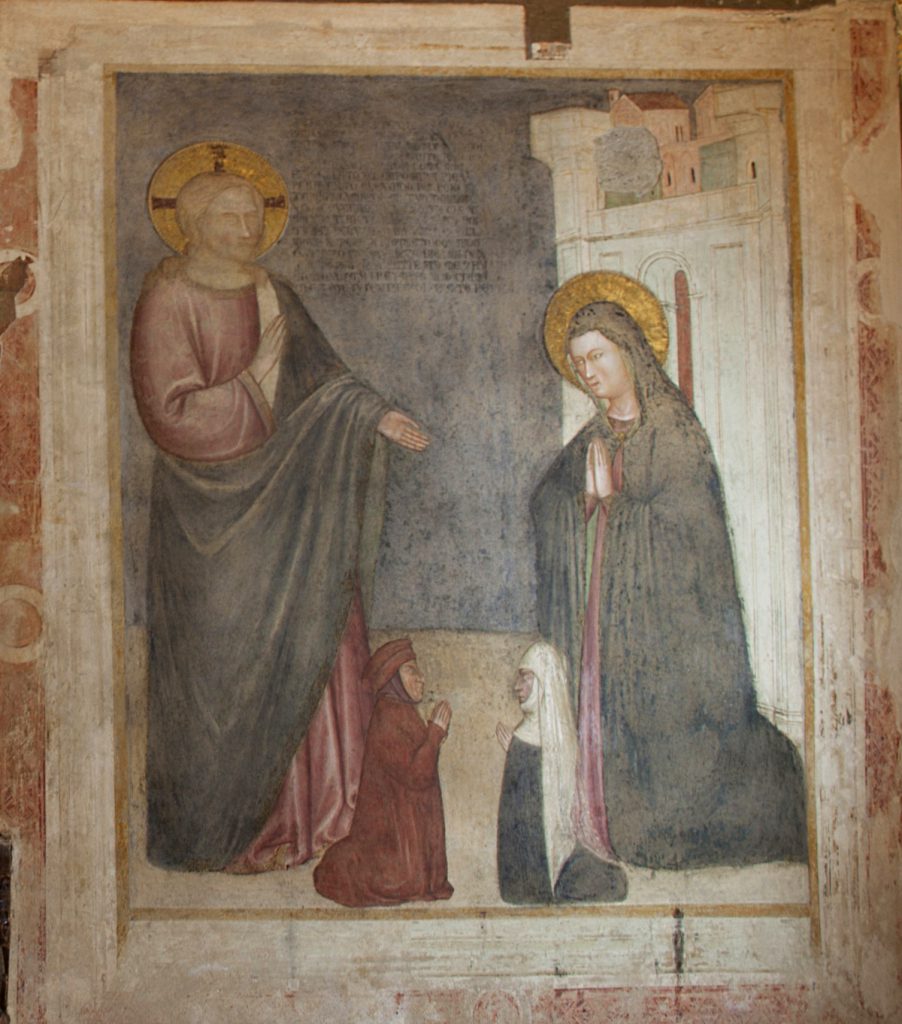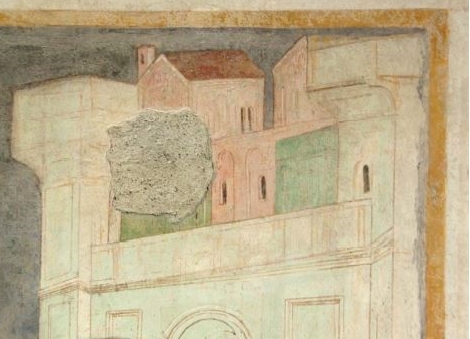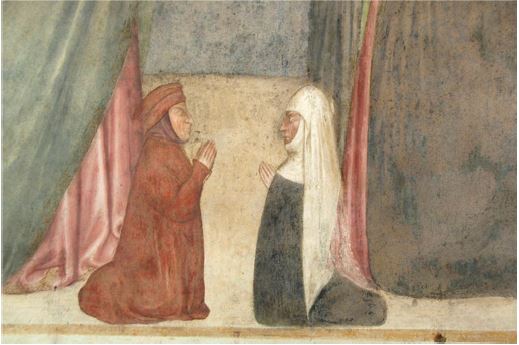Restoration sponsored by the Camposampiero Lyons Club Restoration by Valentina Piovan November-December 2017
The fresco represents an episode, recalled only in the apocryphal Gospels, reporting the moment when Christ took leave from his mother before his Passion. This subject, often accompanied by the episode of Mary’s fainting, is well documented in the sixteenth-century painting (a famous example from the Veneto is Lorenzo Lotto’s canvas in the Gemäldegalerie of Berlin), but rarely appears in the previous era. The iconographic rarity of this fresco makes it particularly interesting, together with its location in the Chapel of the Madonna Mora, where Saint Anthony was first buried.
The restoration made it possible to recover also the architectural background, which in the design of the gate of a walled city seems to recall the fourteenth-century Padua and its ‘ferry’, the hanging walkway that connected the Carrara Palace to the Carrara castle.
The beautiful fresco is also accompanied by a writing, in vernacular, not completely legible, but describing Christ taking leave from his mother and mentioning his next and painful Passion. Perhaps, the real rarity of the theme has induced the donors (the elderly man and woman, depicted below, on a reduced scale and in a devout attitude), or the painter, to clarify what is represented through the inscription. Before restoration, the fresco was attributed to Giusto de’ Menabuoi, a paternity that now seems no longer sustainable.





